The Broadway Melody (1929) film
______________________________
page originally published on 13 December 2009; latest edit: 7 September 2021
______________________________
Musical numbers — We have a film clip of each number highlighted in bold navy blue in the list below. “Lovely Lady” and “Harmony Babies” haven’t been found.
All songs have music by Nacio Herb Brown and lyrics by Arthur Freed except “Truthful Parson Brown,” as noted
Broadway Melody
Love Boat
You Were Meant for Me
The Wedding of the Painted Doll
Boy Friend
Truthful Parson Brown (Willard Robison)*
Lovely Lady
Harmony Babies

(Above) 13 February 1929: Charles King, Bessie Love and Anita Page pose with Earl Burtnett and his Brunswick Orchestra and a huge replica of a record. They are promoting the 1929 MGM musical film The Broadway Melody, winner of the Academy Award for Best Picture.
________________________
 The Broadway Melody is a 1929 film musical, the first sound film to win an Academy Award for Best Picture. It was one of the first musicals to feature a Technicolor sequence, which sparked the trend of color being used in a flurry of musicals that would hit the screens in 1929-1930. Today the Technicolor sequence is presumed lost and only a black and white copy survives in the complete film. The film was the first musical released by Metro-Goldwyn-Mayer and was Hollywood’s first all-talking musical.
The Broadway Melody is a 1929 film musical, the first sound film to win an Academy Award for Best Picture. It was one of the first musicals to feature a Technicolor sequence, which sparked the trend of color being used in a flurry of musicals that would hit the screens in 1929-1930. Today the Technicolor sequence is presumed lost and only a black and white copy survives in the complete film. The film was the first musical released by Metro-Goldwyn-Mayer and was Hollywood’s first all-talking musical.
Writers Norman Houston and James Gleason adapted the screenplay from a story by Edmund Goulding. The film was directed by Harry Beaumont. The score, with music by Nacio Herb Brown and words by Arthur Freed, included the popular hit “You Were Meant For Me”. Bessie Love was nominated for an Academy Award for Best Actress for her performance.
Charles King plays the song-and-dance man whose affection for one sister (Harriet alias Hank) is supplanted by his growing love for the younger, more beautiful sister (Queenie). Queenie tries to protect her sister and derail the love triangle by dating a wealthy but unscrupulous “stage door Johnny.”- excerpts from Wikipedia, adapted
Love Boat – sung by James Burrows
______________
Broadway Melody – The song was used again during the opening credits of the unrelated films Broadway Melody of 1938 and Broadway Melody of 1940.
From the The Broadway Melody (1929):
Charles King, with Nacio Herb Brown on the piano
.
(above images) Bessie Love in costume as “Hank” Mahoney for the staged “Broadway Melody” number of The Broadway Melody (1929), with see-through top hat
(below) Charles King with Bessie Love and Anita Page during a scene featuring a dress rehearsal of the “Broadway Melody” number of the latest revue being produced by Francis Zanfield
The “Broadway Melody” number in the new Zanfield show originally features dancing by the vaudeville sister act known as the Mahoney Sisters. Hank and Queenie Mahoney (played by Love and Page, respectively) are attempting to break through into the big time on Broadway. However, in the scene featuring a dress rehearsal of “Broadway Melody,” Zanfield interrupts the performance to cut the sisters from the number, saying, “That number is too slow. Cut out the Mahoney Sisters.”
______________________
Conrad Nagel and Anita Page
You Were Meant for Me
The song has been recorded numerous times including a recent version by Sting (98). It was included in the films Penny Serenade (1942) and Singin’ in the Rain (1952).
Conrad Nagel sings the song to Anita Page in The Hollywood Revue of 1929, voice overdubbed by Charles King. The camera is on King for a second prior to Nagel’s performance. A bit later it cuts back to King for a couple of seconds, showing him looking disturbed.
.
Charles King — 1929 Victor recording, with the speed corrected by the Youtube provider
.
Harold Scrappy Lambert – 1929
.
Claude Thornhill and his Orchestra — c.1940
_____________
The Wedding of the Painted Doll
Sung offscreen by James Burrows, and danced by a chorus, including the “Zanfield Dolly Girls” and a few men: bridegroom, best man, and an acrobatic “preacher”
.
(above) Bessie Love as Hank Mahoney and Charles King as Eddie
Boy Friend — performed by the Mahoney sisters (Bessie Love and Anita Page)
.
Truthful Parson Brown (Willard Robison) *
At the website for the vintage reissue label Take Two Records, the product description of an album of recordings by Earl Burtnett and His Los Angeles Biltmore Hotel Orchestra, includes the following information regarding the Biltmore Trio:
In 1927, The Biltmore Trio, consisting of Eddie Bush, Bill Seckler and Paul Gibbons, joined Burtnett and enhanced the group not only with strings, but mainly with their vocals. The Trio’s popularity soon rivaled that of the band, encouraging other bandleaders to add vocal trios to their orchestras.
Internet Movie Database credits the band and its members in the film’s Soundtracks list as follows: “Played and Sung by guitarists Eddie Bush, Paul Gibbons, Bill Seckler and Ches Kirkpatrick.”
IMDb also includes Bush, Seckler, and Gibbons in the Full Cast & Crew list for the film, individually crediting each of the three as “Quartet Guitarist and Singer.” The fourth quartet guitarist and singer listed by IMDB is Ches Kirkpatrick. Eddie Lang is also included in the full cast and crew list, but as a “Guitar Player in Band,” not as a member of the quartet.
(above) The pair of photos above appears to show three members of the group which performs “Truthful Parson Brown” in the following clip from The Broadway Melody. I take these three to be Eddie Bush, Bill Seckler and Paul Gibbons, based upon the aforementioned credits at the IMDb, and the quote from the Take Two Records compilation cited above.
Since he is not among the Biltmore Trio members shown in the above photos, nor among the Biltmore Trio members credited by IMDb for appearances in several 1929-1930 films (see “Note” directly below the video), nor among the members of the trio listed in the Take Two Records quote above, the lead singer and fourth member of the quartet would seem be Ches Kirkpatrick, the only other “Quartet Guitarist and Singer” included in the IMDb cast credits. That one of the “guitarists” in the quartet plays ukulele in this number, while the lead singer holds but does not play a guitar, are details not reflected in the IMDb credits.
Video clip presently unavailable
__________________
A summary of films in which the Biltmore Trio (Eddie Bush, Bill Seckler, and Paul Gibbons), and the Biltmore Quartet (same three members, plus Ches Kirkpatrick) appear follows. They were uncredited for each of these films, except the self-titled short of 1929, but have been identified by IMDb, and in other filmographies.
Biltmore Trio: Bush, Seckler, Gibbons
1929 Biltmore Trio (short)
1930 Party Girl
1930 Chasing Rainbows
1930 Children of Pleasure
1930 Love In the Rough
1930 Ladies Last
1930 Peacock Alley
Biltmore Quartet: Bush, Seckler, Gibbons, Kirkpatrick
1929 The Hollywood Revue of 1929**
1929 The Broadway Melody
1929 Words and Music
IMDb also identifies Bush, Seckler, and Gibbons as cast members, presumably performing as but not specifically identified as a trio, of the third of four 1928 shorts titled Earl Burtnett and his Biltmore Hotel Orchestra. Bill Seckler later became a member of the vocal group Three Hits and a Miss, which soon expanded to become Six Hits and a Miss.
Bessie Love and Anita Page
_________________________
_________________
* My song list for the film is made from combining lists at Wikipedia and IMDb, using the order found at the former, but adding Harmony Babies from the latter. Harmony Babies, according to IMDB, is a Brown-Freed number which is “sung and danced briefly by Anita Page and Bessie Love” and reprised near the end of the film. IMDb also has “The Boy Friend” rather than “Boy Friend.” Truthful Parson Brown is given as Truthful Deacon Brown at Wikipedia. However, ASCAP lists the song as Truthful Parson Brown, with no variant titles.
** IMDb includes the Biltmore Quartet and its members Bush, Seckler, Gibbons, and Kirkpatrick among the cast members of the film The Hollywood Revue of 1929, but they are uncredited on the IMDb Soundtracks page for the film. On the other hand, according legendaryjoancrawford.com (site evidently defunct as of 5 June 2018), a band called the “Biltmore Quartet” supports Joan Crawford during the song and dance number “Got a Feelin’ for You,” in The Hollywood Revue of 1929. That may be so, but I’m not convinced the quartet vocal group backing Joan Crawford on “Got a Feelin’ For You” contains any of the same members as the group that performs “Truthful Parson Brown” in The Broadway Melody, though there are similarities in appearance in a couple of cases. My page on The Hollywood Revue of 1929 includes a video of the cited number, featuring Joan Crawford accompanied by a pianist and the mystery quartet, and copies of two photos of the same six people.





























































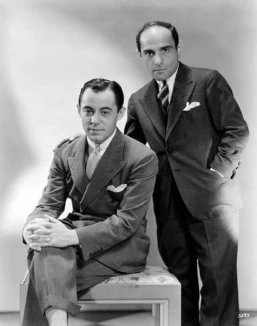

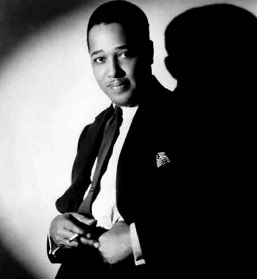


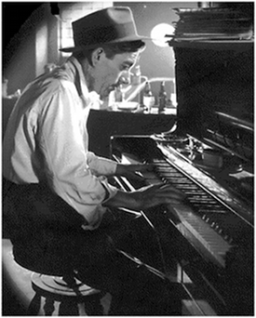
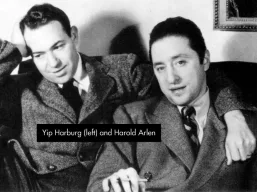




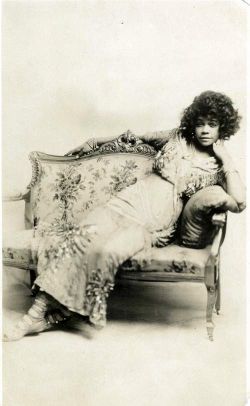










Jul 03, 2011 @ 21:00:00
Name the automobile that was driven away in final scene of “The Broadway Melody” (1930)
Thank you!
LikeLiked by 1 person
Jul 04, 2011 @ 20:42:43
Burt, I presume you refer to The Broadway Melody of 1929. It was released in the US in 1929. I’ll guess a DeSoto, as the first model was introduced that year.
I haven’t seen the film, but perhaps one of my visitors can answer the question. – Jim
LikeLike
Jul 04, 2011 @ 21:03:05
Thank you-so MUCH!
I have one other now. There was a late 1930s comedy that had three academy award nominations; I will appreciate it if you can provide me with the automobile that was driven in that movie.
LikeLiked by 1 person
Jul 06, 2011 @ 16:23:22
Hi Burt,
If your aim is to demonstrate my lack of knowledge about the makes of automobiles used in 1930s films, you are succeeding. — Jim
LikeLike
Jul 15, 2011 @ 16:20:24
Hi, I was not testing you, Jim. Sinclairs Auto Miniatures, in Erie, Pennsylvania, was running a contest and, as much searching as I did, I couldn’t come up with the answer. Needless to say, I didn’t win. For your information,the car was the one-off Heinz PHANTOM CORSAIR.! Ironically, I happen to have a 1/43 scale model of it in my collection! Anyway, thank you so much for your help and indulgence!
LikeLiked by 1 person
Jul 15, 2011 @ 17:31:25
1938 Phantom Corsair
Burt,
That’s quite alright. I did happen to find some of your collection on line, at http://clubs.hemmings.com/olds-gmo/tankel.html (Burt Tankel’s Cars page), and found some of your personal social sites. I like the Futuramic 98 Sedanettes, but the second one seems to have a large visor over the windshield which doesn’t look like it would be aerodynamically sound.
Jim
LikeLike
Jan 04, 2015 @ 16:07:06
Burt: Thanks for clearing up the mystery of the lead singer on “truthful parson brown.” Can you advise me as to how I might acquire copies of the 5 film clips you list of the Biltmore Trio performing. I already have a copy of the “truthful…” film clip. In return I will send you an mp3 of the 57 audio tracks that feature the three original members of the BT before Eddie Bush left California for Hawaii. Thanks
LikeLiked by 1 person
Jan 06, 2015 @ 15:14:42
Hi Gerry,
I added a couple to the list today, and reordered them, listing them in the reverse order in which they are given in the IMDb filmography of Eddie Bush. See also the note above regarding a 1928 film in which Bush, Seckler, Gibbons appear, titled Earl Burtnett and his Biltmore Hotel Orchestra (the third of four 1928 shorts with the same title).
However, what you see in this page, and in my page on The Hollywood Revue of 1929, is pretty much the extent of my knowledge regarding the Biltmore Trio and the Biltmore Quartet. If I were to look for the films with the intention of copying or purchasing them I would probably begin with Google searches on the group names, and on the film titles. I would do general web searches and video searches. It took me only a few moments to find that Amazon has Party Girl (1930) and Chasing Rainbows (1930) for sale. Good luck.
LikeLike
Jan 08, 2015 @ 16:00:08
Thanks, you have a great website.
LikeLiked by 1 person
May 09, 2020 @ 07:05:05
I just saw The Brodway Melody. The song “Truthful Parson Brown” just sticks out for me. Sounds so cool. I can imagine The Fleet Foxes doing a harmonious cover of it. Hope someone could upload the clip on YouTube. A lot of people need to hear the 1929 version.
LikeLike
Jul 28, 2023 @ 11:29:44
Eddie Lang is not in “Broadway Melody” At the time of this picture’s production, Lang was touring and performing in Paul Whiteman’s orchestra. I have been after the IMDb for years to correct this. Apparently, someone has mistaken Eddie Bush (who resembles Lang both physically and in playing style) for Lang.
LikeLiked by 1 person
Jul 28, 2023 @ 15:43:53
Paul,
Thanks! I hadn’t noticed previously that whereas IMDb credits Lang as “Guitar Player in Band,” there is no other mention of a “band” in the cast list, nor in the Soundtracks section, under Music Department, or elsewhere. It’s been awhile since I watched the film, so I don’t recall whether a view of an orchestra or band is ever shown at any point. As I mention above, the four members of the “Truthful Parson Brown” quartet, of which Lang is not one, are each identified as a member of a “quartet” (not of a “band”).
Regards,
doc
LikeLike